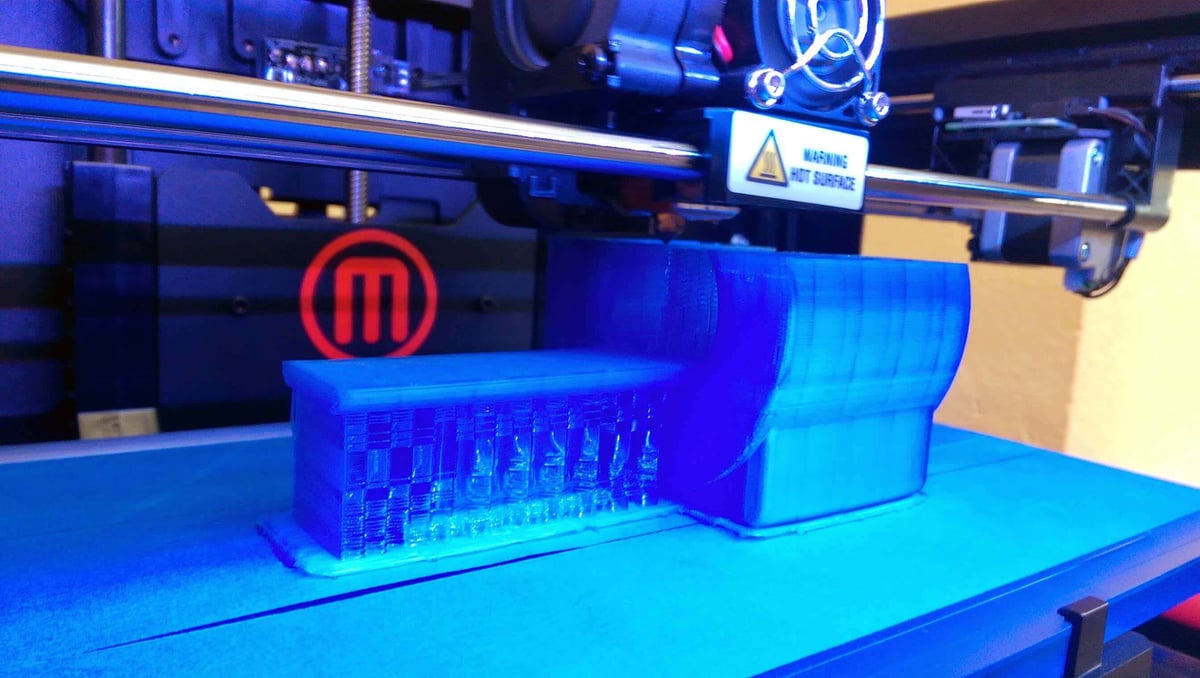The Radcliffe Science Library at the University of Oxford has trialled a 3D printing service for the past year, with interesting results.
The value of a technology only becomes apparent when people get to use it. And for some folks, the financial and technical barriers to 3D printing appear too high. That’s why it’s so important when an academic institution like the Radcliffe Science Library (RSL) at the University of Oxford decides to dip their toes in the water and provide a trial 3D printing service to their students.
Closely involved in the project for the past six months, Oliver Bridle is a Subject Librarian for Biology and Forestry, and his account of the initiative has been published this week on the official website for CILIP, the Chartered Institute of Library and Information Professionals.
Talking about the rationale behind the project, Bridle writes: “We intended to offer a service that was as cheap and simple to use as possible and which would allow people to explore the possibilities of the technology without insisting that models had serious practical or academic applications. After our survey we decided that a 3D printing service at the library could occupy a niche not satisfied by current options.”
3D Printing Services for Everyone

The RSL secured funds to purchase a MakerBot Replicator 2, along with a pair of 3D scanners, and then trained their staff in the use of the hardware. The students didn’t have direct access to the printer; in order to have a model printed, they had to approach the 3D printing team with their request. The benefit of this approach was that library staff could initiate a degree of quality control, ensuring that the model is technically suitable for printing, and that there was no reproduction of copyrighted material, weapons, or other models deemed “inappropriate”.
Once the model had been accepted, the model is prepped for printing along with an estimated printing time. Students have to pay for the cost of the print upfront, based on charges of £2 for the first hour of printing and £1 for each additional hour. These charges cover the cost of the PLA filament plus a contribution to maintenance and spare parts for the MakerBot. Once the job is complete, the student is informed by E-mail to come collect.
“Reaction to the service has been extremely positive”, says Bridle. “So far we have printed over 100 models for readers. Models have ranged from head scans of readers to prototype designs for an undergraduate engineering project and models of molecular structures.”
One print request was to produce a toy model of an MRI scanner for a research group, based in the Experimental Psychology Department. “As part of research looking at the relationship between brain development and mathematical achievement in children and adolescents, the scientists have been using an MRI scanner to image participants’ brains,” explains Bridle. “Because being in an MRI can be a claustrophobic and noisy experience, the researchers used the toy model along with some Lego characters to explain how the tests would work to children in order to reduce any anxiety.”
Lessons Learned
After six months of operation, the project is widely considered a success, and the RSL plans to continue offering the service. “We were fortunate in being able to draw on other examples of library 3D printing services,” Bride states. “Initial research in this area allowed us to identify issues quickly where we would need to think carefully about our own service as, for example, when creating a printing policy.”
But that’s not to say the 3D printing service was not without its problems. Due to the level of demand, it quickly became apparent that the maximum times for print jobs had to be capped at 5 hours. Whilst that puts some restriction on the size, quality or complexity of the print job, it was necessary in order for the team to turnaround the number of jobs they were receiving within a reasonable time.
Print failures and breakdowns were another factor that consumed a large amount of time for the staff. And some jobs were turned down out of concern for potential copyright infringement.
Taken altogether, this initiative by the RSL neatly encapsulates both the benefits and drawbacks of 3D printing today. And it should be applauded how they’ve taken such a measured approach in making the technology available to their staff and students.
Image source: CILIP
License: The text of "3D Printing Services at Libraries Provide Open Access" by All3DP is licensed under a Creative Commons Attribution 4.0 International License.